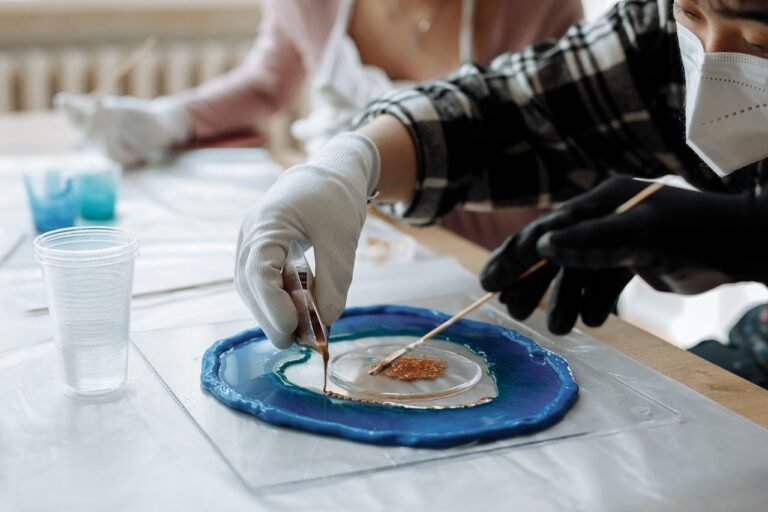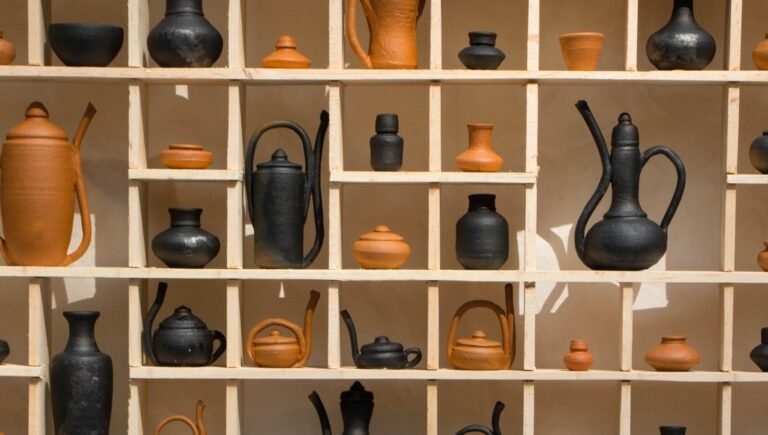What are polymer clay canes?
Polymer clay is a popular crafting material that is everywhere now; during the pandemic, arts and crafts using polymer clay cane become a helpful distraction to ease anxiety and escape the feeling of isolation.
Polymer clay canes are logs and cylinders made from polymer clay. The canes are long, straight, and decorated in various ways. When sliced, the design appears creating 3D images, which can be arranged like tiles.
It is made of polymer clay, a hardenable modeling clay based on polymer polyvinyl chloride (PVC). It typically contains no clay minerals, but like mineral clay, a liquid is added to dry particles until it achieves gel-like working properties, and similarly, the part is put into an oven to harden, hence its colloquial designation as clay.
How Do You Make Polymer Clay Canes?
To make polymer clay canes, you need to undergo your polymer clay into the act of conditioning, the “act of restoring the clay to a state close to its original factory-mixed condition.”
Polymer clay will last for years if stored at cool temperatures and away from direct sunlight, but even at cool temperatures, polymer clay will naturally “advance,” or change over time. Advancement makes the clay stiffer as ingredients shift toward their original wet or dry states, hence the need for conditioning.
Most conditioning is done simply by working the clay with your hands until it reaches a good working consistency. The warmth of your hands combined with the physical process of stretching and compressing makes them softer and more pliable. If the clay is dry or crumbling, you can use additives, such as liquid clay, with your pasta machine to restore condition.
The next step is blending the clay colors; Judith Skinner developed this technique. Skinner blends are created to add shading or gradual transition from one color to another. Of course, you can make a polymer clay cane without a Skinner blend, but it will help achieve more realistic lighting effects for your canes.

Mixing clay is like mixing paint. Understanding the color wheel will assist you in making the right blending choices. Polymer clay colors can be neutralized with complements which are opposites on the color wheel. Making your recipes for colors provides you with a unique palette to create your designs. Using a pasta machine helps speed up the mixing process, but you can also mix colors by hand.
I prepared a three-colored sheet of yellow, orange, and red. I first conditioned the three colors separately. Since I did not want a deeply blended sheet for this example, I cut the edges of the colors straight, but angling the edges more will change the effects of clay blending. Next, I ran the three-color sheet through the pasta machine length-wise, making multiple passes starting with the largest to most miniature settings.
I folded the clay sheet once each time to increase the thickness as I passed it through again at the following lowest setting. Blending can take dozens of passes through the pasta machine to get the effect you are looking for. Therefore, I always rotate the blend in the other direction for the last couple of passes. The result is a long gradient-colored sheet of polymer clay.
The last step for making any Skinner blend is to fan-fold the long piece of clay sheet (as pictured above) to make a thick block. Square the block by slicing off any excess scraps. The scraps can be used to make the cane center or other projects.
What Can You Make With Clay Canes?
Canes are one of the fascinating aspects of polymer clay art and my favorites. There are endless possibilities in designing it, from simple lace canes to the more complex. In most cases, I made a necklace, an embellished pen holder, earrings, a candle holder, and many more. No matter what kind of product you make, the outcome will always look great because it is personal and handmade—a product of anything you imagine.
What Do You Use Polymer Clay Canes For?
You can cut a slice of a polymer clay cane and pierce it to form a bead at its most simple. Slices of square canes can be arranged like tiles to make a uniform surface. Sheets of millefiori designs can be used to cover things such as crochet hook handles, tin lids, or small boxes. Cane slices can be shaped to make sculptural forms, perhaps with each slice forming the petal of a flower.
Canes are used anytime you want to create the exact design repeatedly. An example would be to create a signature emblem for signing polymer clay artwork. One fun way to use canes is when the slices themselves are treated as components to “paint” a picture in mosaic style. Predominantly canes are utilized in jewelry work, but they also can be applied to miniature making.
Do You Bake Polymer Clay Canes?
Polymer clay canes need to cook at the correct temperature to be hardened and to avoid distortion with the unfinished cane. Therefore, you must bake them before cutting them into smaller pieces.
Finding the right temperature of your oven will help you create great polymer crafts; just read the package’s instructions but, just like a science experiment, the outcome will sometimes not be the same. But, of course, there are exceptions, just like for translucent or light-colored clays.
You will need to put some glazed ceramic tiles into your oven before baking. Pre-heat for at least 15 minutes to get them hot. Place your pieces (and their holder like a cookie sheet) on top of the ceramic tiles when baking. They will hold heat and even out the oven’s temperature after opening the door to put in your pieces.
When it is cured correctly, you can mark your cooled piece when you press your fingernail into it, but it won’t sink in. It won’t be easy to break, but if it is thin, it might bend easily. It will break or cut cleanly, without a crumbly texture.









